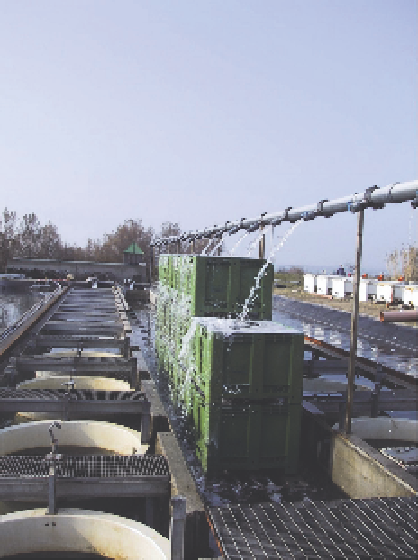Environmental Engineering Reference
In-Depth Information
5. Cultivation of
T. philippinarum
in the Lagoon of Marano and Grado
5.1 Production cycle
The cultivation of
T. philippinarum
in the Lagoon of Marano and Grado is characterized by
three phases: production of larvae and seed, pre fattening and fattening. The production of
larvae and seed take place in the hatchery and in this phase the conditioning of broodstock
occurs through acclimation with controlled temperature and a balanced diet. The emission
of gametes is induced by thermal shock and after the fertilization the true phase of
cultivation takes place with the growth of larvae up to metamorphosis stage (220 μm). The
subsequent growth of the seed occurs in tanks with controlled temperature and by intake of
phytoplankton cultures. When the seed reaches a size of 1.5-3 mm the next phase of pre
fattening starts. This is a very delicate step and an unsuccessful of the pre fattening could
seriously affect the entire cycle of production. The techniques used in the Lagoon of Marano
and Grado are carried out in plastic or fiberglass tanks at ground (Fig. 3), on floating
upweller or directly on the lagoon bottom, where juveniles are protected by laying of plastic
nets (Fig. 4). These plastic nets protect the juvenile clams from predators such as crabs and
birds. This step ends when Manila clams reach a size of about 12-15 mm, after this the
product is collected, selected, counted and prepared for the next phase called fattening.
Fig. 3. Pre fattening in plastic tanks
The fattening is conducted on the lagoon bottom with pelitic sand sediment and some of the
culture areas are periodically emerged during low tide (-40 cm to +10 cm). In this phase the
seed of about 15 mm is placed with a density of about 150 individuals/m
2
, for a period of 24 to
36 months. Normally 50% of the juveniles survive until the commercial size (35-40 mm, 15 g)


Search WWH ::

Custom Search